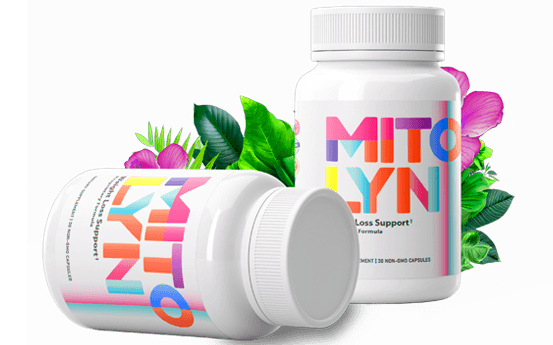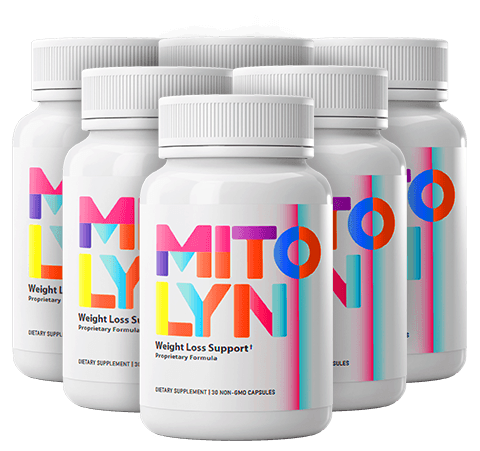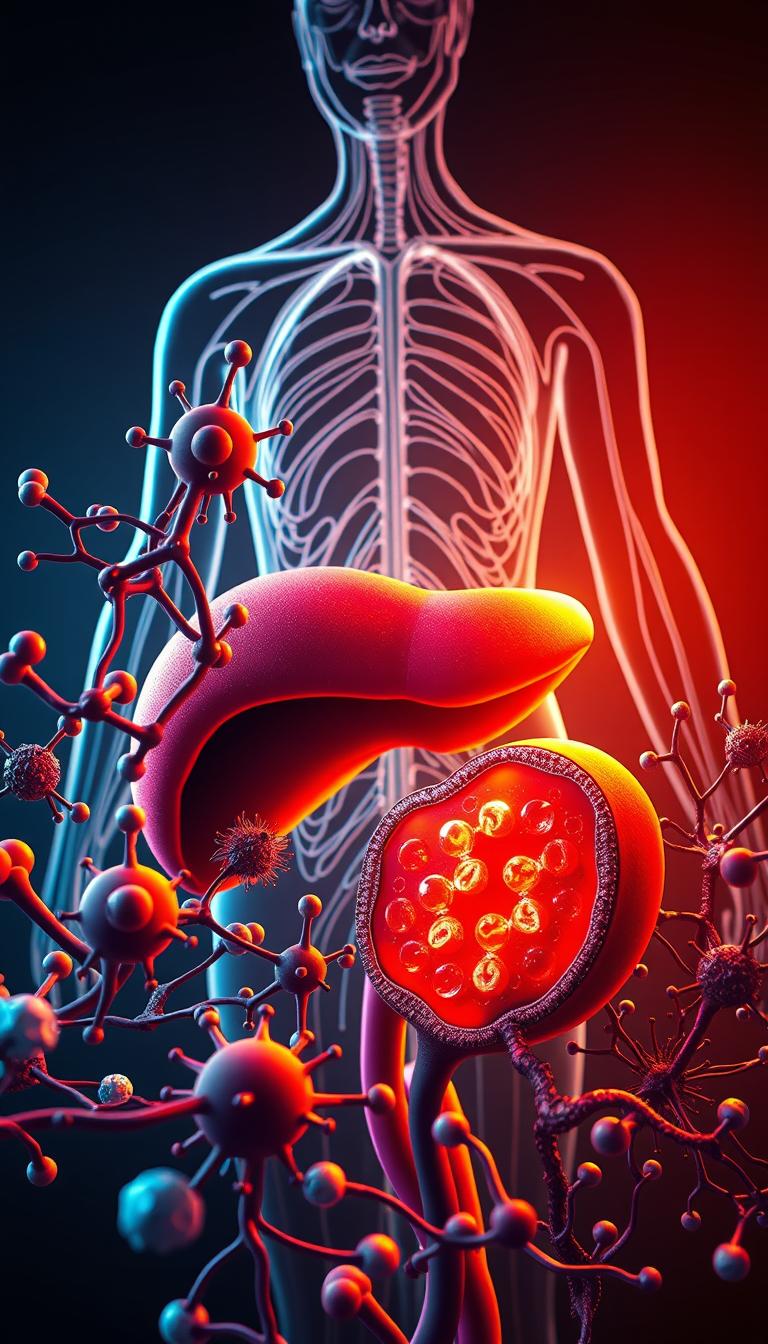
Ever felt tired after eating a big meal or confused when blood sugar drops? These signs show your body’s health. Learning about natural blood sugar control helps everyone stay energized and balanced. Simple actions, like drinking water or eating fiber, can keep your blood sugar in check.
Key Takeaways
- Regular exercise, like 150 minutes weekly of moderate activity, boosts insulin sensitivity and helps muscles use blood sugar efficiently.
- High-fiber foods slow carb digestion, keeping blood sugar steady and preventing spikes.
- Staying hydrated flushes excess sugar from the blood, supporting maintaining healthy levels.
- Probiotic-rich foods like yogurt and sauerkraut improve gut health, aiding natural blood sugar balance.
- Natural sugars in fruits raise glucose similarly to table sugar but with fewer risks than refined starches.
Your body is made to control glucose, but modern life often gets in the way. This guide explains how diet and lifestyle keep you energized. Discover how small changes can help your body work its magic, without needing complicated diets.
Understanding Blood Sugar Fundamentals
Your body needs blood sugar to turn food into energy. Blood sugar, or glucose, comes from what you eat. Keeping this balance is key for daily energy and health.
What Blood Sugar Actually Is
Carbohydrates in your food turn into glucose in your body. This sugar is your cells’ main fuel. For example, a slice of bread or a banana turns into glucose after digestion.
The average fasting blood sugar level is 80–90 mg/dL. This is your body’s baseline.
How Your Body Naturally Regulates Glucose
Your body uses hormones like insulin and glucagon to manage glucose. Here’s how it works:
- Insulin (made by the pancreas) helps cells take in glucose, lowering blood sugar.
- Glucagon tells the liver to release stored glucose when levels drop.
The Delicate Balance of Blood Sugar Levels
Healthy ranges are crucial: 80–130 mg/dL before meals, under 180 mg/dL two hours after eating. Let’s look at it:
- Too high (hyperglycemia) can harm organs over time.
- Too low (hypoglycemia) can cause dizziness or confusion.
Controlling glucose levels naturally starts with knowing these targets. Small changes like balanced meals and regular movement help keep the balance. Ignoring it raises risks, like diabetes in 9.4% of Americans. So, staying informed is your first step toward better health.
The Science Behind Natural Blood Sugar Control
Your body has special ways to keep blood sugar levels just right. We’ll look at three main parts: metabolic pathways, hormones, and organs. Knowing about these helps you find natural ways to control blood sugar.
The Metabolic Pathways of Glucose
Glucose goes through three main paths:
- Glycolysis: Splits glucose into energy.
- Glycogenesis: Stores extra glucose as glycogen in the liver.
- Gluconeogenesis: Makes glucose from non-carb sources when levels fall.
| Pathway | Process | Goal |
|---|---|---|
| Glycolysis | Breaks glucose into ATP energy | Quick energy production |
| Glycogenesis | Stores glucose as glycogen | Reserves for later use |
| Gluconeogenesis | Makes glucose from proteins/fats | Maintains levels during fasting |
Hormonal Influences on Blood Sugar
Key hormones act like messengers:
| Hormone | Role | Effect |
|---|---|---|
| Insulin | Unlocks cells to absorb glucose | Reduces blood sugar |
| Glucagon | Triggers liver to release stored glucose | Raises blood sugar |
| GLP-1 | Boosts insulin secretion after meals | Improves insulin efficiency |
Scientists use advanced tech like cryo-EM to study hormone receptors like GPCRs. This helps in making new diabetes drugs.
The Role of the Pancreas and Liver
The pancreas makes insulin and glucagon. The liver stores glucose as glycogen and releases it when needed. Together, they keep blood sugar levels stable.
By supporting these systems with diet and lifestyle, you follow your body’s natural plan. Small choices like eating low-glycemic foods or staying active can help keep blood sugar steady.
Why Maintaining Healthy Blood Sugar Matters
Keeping blood sugar in check is more than just avoiding diabetes. It’s about protecting your whole body. The importance of blood sugar control is clear when you think about heart disease, kidney damage, and vision loss. Even small changes can make you feel tired, unfocused, and affect your mood.

High blood sugar can damage blood vessels and nerves. The American Journal of Clinical Nutrition found that too much added sugar increases heart disease risks. On the other hand, maintaining healthy blood sugar levels helps your organs and boosts your energy. It makes you think clearer, work out better, and have balanced hormones.
- Heart health: Too much sugar can harm your arteries and increase heart disease risks.
- Energy stability: Avoiding sugary snacks like soda (41g sugar per can) or cupcakes (18g sugar each) helps.
- Organ protection: Kidneys filter glucose; too much can damage them over time.
Small changes can make a big difference. Cutting down on hidden sugars in foods like ketchup or bread helps. Eating more fiber-rich fruits slows down sugar absorption. Exercise also helps by using glucose for energy and improving insulin sensitivity. These small steps today can lead to a healthier life tomorrow.
Managing blood sugar is not just about dieting. It’s a daily habit. Start by reading food labels, drinking water instead of sugary drinks, and taking short walks after meals. Your body will reward you with more energy, clarity, and protection against diseases.
The Critical Role of Insulin in Your Body
Insulin is key to managing glucose in your body. It’s made in the pancreas and helps cells use glucose for energy or store it. This balance is crucial for controlling blood sugar naturally.
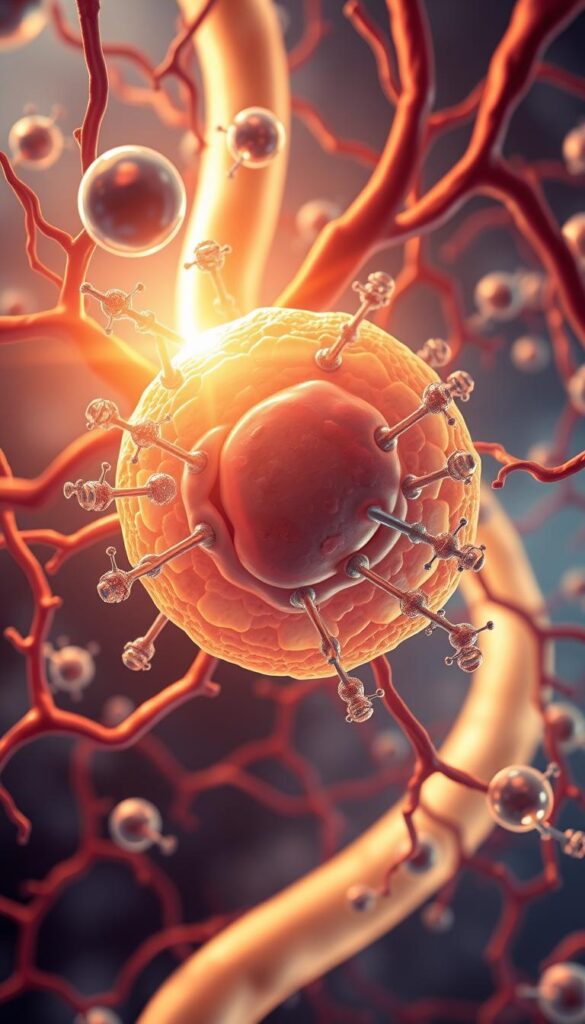
How Insulin Functions as a Key
Insulin is like a delivery driver for your body. After eating, it helps cells take in glucose. This process keeps blood sugar levels steady. Without insulin, blood sugar can get too high, leading to diabetes.
When Insulin Resistance Develops
Cells may stop listening to insulin over time. This can happen from eating too many carbs, not moving enough, or stress. When this happens, insulin can’t do its job, causing blood sugar to rise too high. The goal is to reverse this before it’s too late.
Natural Ways to Improve Insulin Sensitivity
- Move More: Exercise makes muscles use glucose better, needing less insulin.
- Choose Wisely: Foods high in fiber slow down sugar absorption, helping insulin.
- Sleep Smart: Not enough sleep messes with insulin signals. Try for 7–8 hours a night.
Making small changes can make a big difference. By focusing on these steps, you help insulin do its job and keep your health on track. No need for complicated solutions.
Nutrition Strategies for Balanced Blood Sugar
Choosing the right foods and timing meals smartly are key natural ways to regulate blood sugar. These strategies work with your body’s systems to keep levels stable without extreme restrictions.
Low-Glycemic Foods and Their Benefits
Swap refined carbs for low-glycemic picks like oatmeal, quinoa, and lentils. These foods release glucose slowly, avoiding spikes.

“Starches like bread turn into sugar fast, but pairing them with protein or fats slows absorption,”
says nutrition expert Dr. Emily Carter. Try adding nuts to cereal or cheese with crackers.
Fiber’s Role in Blood Sugar Management
- Soluble fiber (in oats, beans, apples) traps sugars, slowing digestion.
- Insoluble fiber (found in broccoli, carrots, and bran) aids gut health and prolongs nutrient absorption.
Incorporate chia seeds in smoothies or roasted veggies as easy swaps.
Timing Your Meals for Optimal Control
Eat every 3–4 hours to avoid overeating. Pair carbs with protein or fats: Greek yogurt with berries, or avocado with toast. Blood sugar management also benefits from consistent mealtimes and avoiding late-night snacks.
Small changes like these create a foundation for long-term stability. Prioritize whole foods and mindful eating to support your body’s natural rhythms.
Physical Activity and Its Impact on Glucose Regulation
Exercise is a strong way to control glucose levels naturally. When you exercise, your muscles use glucose for energy. This lowers your blood sugar. Even a short 15-minute walk can make your body better at using insulin.
Regular exercise also lowers A1C levels over time. A1C is a key marker of blood sugar control.

- Aerobic exercise: Walking, cycling, or swimming increase mitochondrial function, burning glucose and improving insulin response.
- Resistance training: Lifting weights builds muscle mass, which enhances glucose uptake and lowers A1C by up to 0.57%.
- HIIT: Short bursts of intense activity followed by rest periods rapidly boost insulin sensitivity.
- Light activity: Breaking sedentary time with 5-minute walks every 30 minutes improves glycemic control in people with type 2 diabetes.
Follow the 15-15 rule: If blood sugar drops below 100 mg/dL, eat 15-20g of fast-acting carbs and recheck after 15 minutes.
Doing 150-175 minutes of aerobic and resistance training each week can lower type 2 diabetes risk by 40-70%. Start small with a 10-minute walk after meals to help clear blood sugar spikes. Always check your levels if you’re taking insulin or meds to avoid low blood sugar.
Every step you take, whether dancing, gardening, or climbing stairs, helps manage your glucose. Move regularly and let your body’s natural systems help you.
Stress, Sleep, and Your Blood Sugar: The Hidden Connection
Did you know stress and sleep are key to keeping blood sugar healthy? The science behind natural blood sugar control shows how stress hormones raise blood sugar. This happens even when you haven’t eaten.
Chronic stress makes this worse by keeping cortisol levels high. This can lead to insulin resistance over time.
Quality sleep is like a reset button for your body. Research shows one bad night of sleep can lower insulin sensitivity by 40%. This can raise your risk of type 2 diabetes.
Here’s how to stop this cycle:
- Optimize sleep duration: Aim for 7–8 hours each night. Americans now get only 6.5 hours, down from 8 in the 1960s.
- Reduce screen time before bed: Blue light from screens can mess up your sleep.
- Practice stress management daily: Mindfulness meditation can help lower cortisol and keep blood sugar stable.
| Stress Hormone Impact | Sleep Deprivation Risk |
|---|---|
| Cortisol + Glucagon = Higher Blood Sugar | Short sleepers have 20% higher diabetes risk |
| Chronic stress worsens insulin resistance | Shift workers face 20-30% higher metabolic disease risk |
Simple tools like breathing exercises and muscle relaxation can lower cortisol. Even 10 minutes of mindful breathing a day can help control blood sugar. Remember, sleep and stress relief are crucial for natural blood sugar control.
Natural Supplements and Herbs That Support Healthy Blood Sugar
Looking into natural ways to regulate blood sugar often means checking out herbs and supplements. These can help, but talk to your doctor first. This is especially true if you’re already on medication.
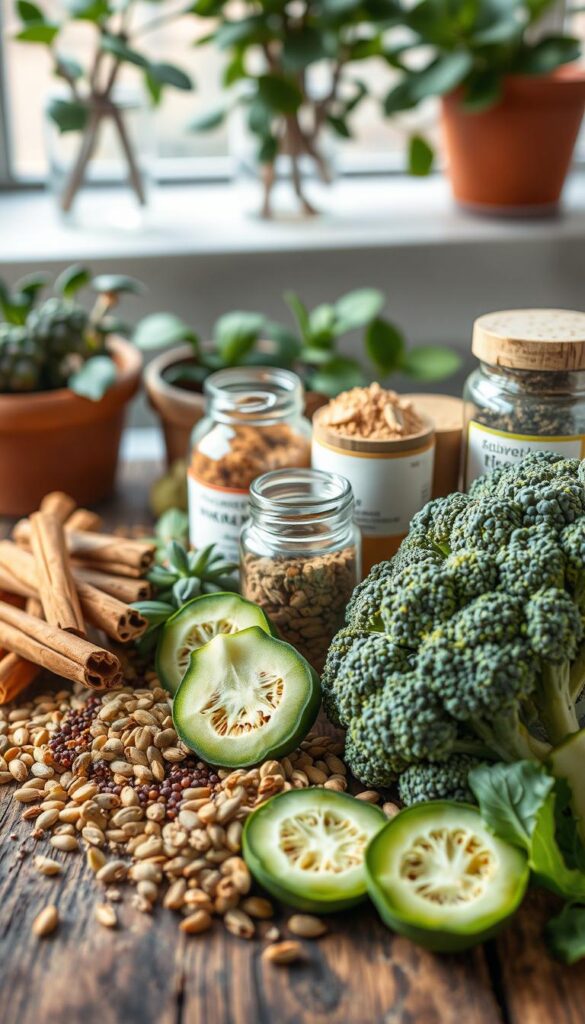
Here’s a breakdown of key options studied for controlling glucose levels naturally:
| Supplement | Key Effect | Dosage | Study Notes |
|---|---|---|---|
| Cinnamon (Cassia) | Lowers fasting blood glucose | 1–6g/day | 2012 Cochrane Review: 19.26 mg/dL FBG reduction |
| Magnesium | Improves lipid profiles and blood pressure | 300–600 mg/day | 2017 meta-analysis in type 2 diabetes patients |
| Alpha-lipoic acid (ALA) | Reduces HbA1c by 0.35% | 600–1,800 mg/day | 2019 meta-analysis; caution with hypoglycemia risk |
| Zinc gluconate | Enhances glycemic control | 25 mg twice daily | 2017 meta-analysis; best paired with medical guidance |
Supplements like bitter melon or green tea polyphenols (EGCG) might look promising. But they need more human trials. Always focus on diet and exercise first. And never swap your meds for supplements without a doctor’s okay.
Signs Your Blood Sugar Needs Attention
Knowing the early signs of blood sugar imbalance is crucial. The importance of blood sugar control is huge. It helps avoid big problems. Here’s what to look out for.
Physical Symptoms to Watch For
Look out for these common signs:
- Increased thirst and frequent urination (the 3 P’s: polydipsia, polyuria, polyphagia)
- Blurred vision, unexplained weight loss, or slow-healing cuts
- Fatigue that doesn’t ease with rest or sudden mood swings

When to Seek Medical Help
See a doctor if you notice:
- Symptoms lasting longer than 24 hours despite diet changes
- Blood sugar readings above 250 mg/dL fasting or 180 mg/dL two hours after eating
- Signs of diabetic ketoacidosis (DKA): fruity breath, rapid heartbeat, confusion)
Severe symptoms like chest pain or trouble breathing need emergency care. Early action can prevent serious harm.
Spikes vs. Chronic Issues
Now and then, a spike after eating sweets might cause mild symptoms. But, chronic problems like daily fatigue or blurred vision are different. They last for weeks. If you can’t manage it yourself, get help.
Regular checks with at-home tests or a glucometer are key. They help spot trends.
Being proactive with blood sugar management is important. Don’t ignore warning signs. Your health is at stake.
Common Misconceptions About Blood Sugar Management
Sorting through myths about blood sugar management can feel confusing. Let’s clear up the most common misunderstandings. Understanding insulin function and how it interacts with food choices is key to making informed decisions.
“Our society isn’t set up to support blood sugar management. Processed foods and sugary snacks make change tough,” says O’Meara.

| Myth | Facts |
|---|---|
| “Avoid all carbs” | Complex carbs like oatmeal and quinoa stabilize blood sugar. Focus on portions, not elimination. |
| “Fruit is unhealthy” | Fruits’ fiber slows sugar absorption. A medium apple with 19g sugar offers vitamins and antioxidants. |
| “Diabetes is curable” | No cure exists—46.6% wrongly believe herbal remedies work. Management through diet and meds is essential. |
| “Insulin is a cure” | Insulin helps regulate glucose but doesn’t reverse diabetes. Proper understanding of its role improves management strategies. |
| “Avoid all sweets” | Small portions of dark chocolate (70%+ cocoa) fit into a balanced diet when paired with protein. |
Myth-busting starts with knowledge. Blood sugar management thrives on balance—not extremes. By prioritizing whole foods and staying informed, you’ll avoid traps that sabotage progress. Science—not myths—guides the way.
Conclusion: Empowering Yourself Through Natural Blood Sugar Control
Small steps can lead to big changes. Starting with everyday choices is key. Try pairing carbs with protein and fiber, like eggs with spinach or nuts with fruit. This slows down how glucose is absorbed.
O’Meara says this method helps avoid big spikes in blood sugar. It makes managing blood sugar levels easier over time. Begin with small changes, like drinking water instead of soda or walking during TV ads.
These small habits can add up. They help you build momentum towards better health.
Healthy blood sugar levels are easier to maintain with the right strategies. The Glucose Goddess Method offers four helpful hacks. Try eating savory breakfasts, moving after meals, and starting with veggies.
Yoga or a short walk after eating can also help. Tracking your meals can reveal patterns. Even small changes, like choosing roasted veggies over fries, can boost your energy and focus.
Remember, it’s about progress, not perfection. What works for one person might not work for another. Experiment to find what works best for you.
Focus on keeping your blood sugar stable. This reduces risks of high HbA1c levels and diabetes complications. It also improves your mental clarity. Start with a small change today, like swapping sugary snacks for nuts or doing a 5-minute stretch after dinner.
Every choice you make brings you closer to lasting wellness. Your health journey is unique. Take it one step at a time.
FAQ
Why is it important to control blood sugar levels?
Keeping blood sugar levels healthy is key for everyone. It boosts energy and mood. It also helps your brain work better and prevents serious health problems like heart disease and kidney damage.
What foods are best for regulating blood sugar naturally?
Eat foods with a low glycemic index and lots of fiber. Include whole grains, legumes, leafy greens, and fruits with less sugar. These foods help control blood sugar naturally.
How does exercise affect blood sugar levels?
Exercise helps control blood sugar by making your body use insulin better. It also helps muscles take up glucose. Both types of exercise are good for managing blood sugar.
What is insulin resistance, and how can I prevent it?
Insulin resistance happens when your body doesn’t use insulin well. It’s caused by diet, exercise, and stress. Eat well, exercise regularly, and manage stress to avoid it.
Can stress affect my blood sugar levels?
Yes, stress can raise blood sugar by increasing cortisol. This hormone makes your liver release glucose and makes your body less sensitive to insulin. Stress management helps control blood sugar.
What are some signs of blood sugar dysregulation?
Signs include feeling tired, thirsty, needing to pee a lot, and trouble thinking. Spotting these signs early helps manage blood sugar.
Are there any natural supplements that can assist in blood sugar management?
Supplements like chromium, magnesium, and berberine might help with blood sugar. But, they should not replace diet and exercise changes.
How can I determine if I have normal blood sugar levels?
Normal fasting blood sugar is below 100 mg/dL. Talk to a doctor for a check-up and to know your risk.
Is it true that all carbohydrates are bad for blood sugar control?
Not all carbs are bad. Whole, nutrient-rich carbs like fruits and whole grains are good. Choose high-fiber, low-glycemic carbs to avoid blood sugar spikes.








